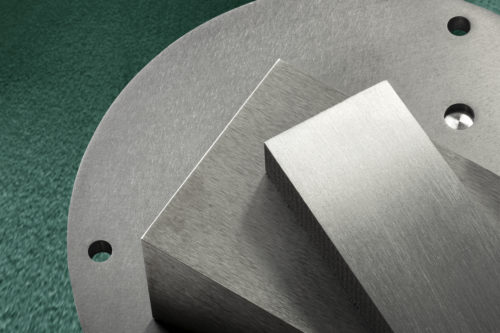Molybdenum Sheets and Plate
Molybdenum is a silvery-grey metal with a high melting point of 2,623°C. It has a density of 10.2 g/cm³
and is highly resistant to corrosion and wear. It is also known for its high strength and toughness, making it an ideal material for use in high-temperature and high-stress applications.
In terms of its chemical properties, molybdenum is a chemical element with the symbol Mo and atomic number 42. Moly is also very resistant to corrosion, even in acidic and high-temperature environments, and is often used in the production of alloys and high-strength steel.
In terms of its mechanical properties, molybdenum is a very hard and strong material that has a high tensile strength and good ductility. It is also known for its high thermal conductivity, making it an ideal material for use in high-temperature applications. Moly has a low thermal expansion coefficient, which allows it to maintain its strength and stability even at high temperatures. Additionally, molybdenum has a high elastic modulus, which means it is able to resist deformation under stress.
This metal was first isolated in 1782 and its industrial uses have been increasing ever since. In this article, we will discuss the typical size capabilities for flat sheets and plates, purity and specification, common applications, production and more.
SIZE CAPABILITIES FOR FLAT SHEETS AND PLATES
- Thickness Range: .002” (.05mm) to 2.0” (50mm)
- Width Max Range: 2.0” (50mm) to 23.6” (600mm)
- Length Max Range: 4” (100mm) to 118” (3000mm)
PURITY AND SPECIFICATION
- Minimum Purity: 99.95% (when specified)
- Specification: ASTM B386 (when specified)
COMMON APPLICATIONS
Steel additive
Molybdenum is used to enhance the strength, corrosion resistance, and durability of structure and stainless steels, particularly in marine environments.
Superalloy additive
Molybdenum is used to strengthen, increase hardness and resistance to wear and deformation at high temperatures in high-speed steels and superalloys. These are used in drilling and cutting tools, jet engines, and power generation turbines.
Cast iron and automotive alloy additive
A small percentage of molybdenum is used to improve the strength, hardness, temperature and pressure tolerance of cast iron and steels used in automobile engines.
Industrial Vacuum Furnace Parts
Molybdenum is used in vacuum furnaces as heating elements and heat shields due to its high melting point.
Catalysts
A significant portion of molybdenum is used in chemicals, mostly as catalysts for petroleum refineries.
Thin Films
Molybdenum is used in a variety of electronics devices due to its high melting temperature, electrical conductivity, and thermal expansion coefficient.
HISTORY OF MOLYBDENUM
- Molybdenum metal was first isolated by Peter Jacob Hjelm in 1782.
- Its industrial applications began in the early 20th century as an alloy agent in tungsten filament for lighting and steel plate for armor vehicles.
- The exploration for new sources led to the discovery of the Climax deposit in Colorado in 1918.
- By the 1930s, molybdenum was widely accepted as an industrial material, and its demand continued to grow with the rise of the automobile industry.
PRODUCTION
- Total global mine production in 2017 was around 290,000 tons, with China being the largest producer, followed by the US and Peru.
- Molybdenum is mostly a by- or co-product of copper, with only a few mines producing it as a primary product.
- The primary production of molybdenum is extracted from molybdenite, a sulfide ore that contains between 0.01% and 0.25% molybdenum.
- The molybdenite ore is first crushed and floated, and the molybdenum sulfide (MoS2) produced is roasted to create roasted molybdenite concentrate (MoO3), which contains a minimum of 57% molybdenum.
- The concentrate is then sublimated to produce molybdicoxide (MoO3), which is reduced through a two-step hydrogen reduction process to produce molybdenum metal.
- In the first step, MoO3 is reduced to molybdenum dioxide (MoO2), and then it is pushed through hydrogen flowing tubes or rotary furnaces at 1000-1100°C to produce a metal powder.
- Molybdenum produced as a by-product of copper from copper porphyry deposits is removed as molybdenum disulfate during the flotation of the copper ore. The concentrate is roasted to make molybdic oxide and then processed through sublimation to produce molybdenum metal.
Molybdenum is a valuable metal with a wide range of industrial applications. Admat offers high-quality molybdenum sheets and plates at competitive prices. If you need molybdenum for any of the common applications mentioned above, look no further than Admat for your solution.


